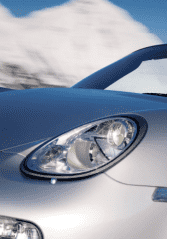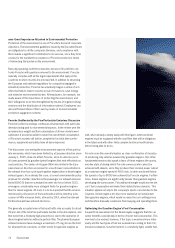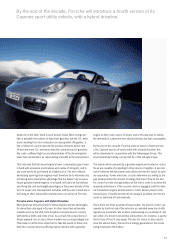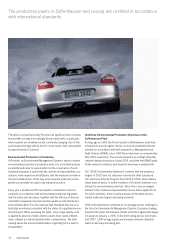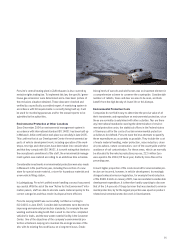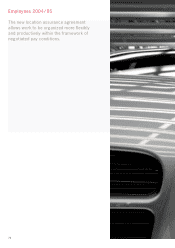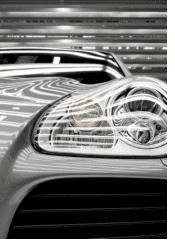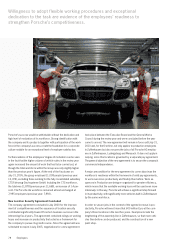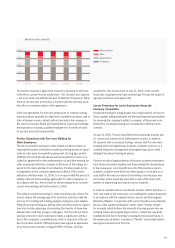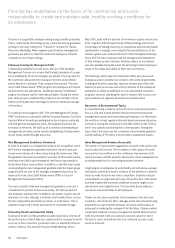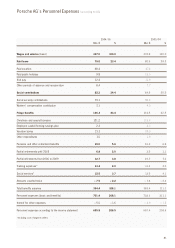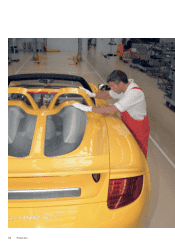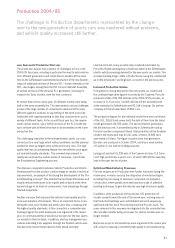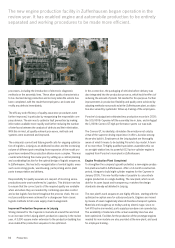Porsche 2004 Annual Report Download - page 78
Download and view the complete annual report
Please find page 78 of the 2004 Porsche annual report below. You can navigate through the pages in the report by either clicking on the pages listed below, or by using the keyword search tool below to find specific information within the annual report.
The production plants in Zuffenhausen and Leipzig are certified in accordance
with international standards.
The hybrid concept favored by Porsche has significant fuel-consump-
tion benefits in today’s increasingly dense urban traffic in particular,
where speeds are relatively low but constantly changing. Use of this
promising technology with its electric motor lowers fuel consumption
by approximately 15 percent.
Environmental Protection in Production
At Porsche, an Environmental Management System is used to monitor
environmental protection in production areas. It is a tool that functions
excellently and relies to a great extent on the cooperation of each
individual employee. It systematically controls all responsibilities, pro-
cedures, work sequences and attitudes, with the emphasis on environ-
mental considerations. In this way, environmental protection is inte-
grated successfully into day-to-day industrial practice.
Every year a System and Process Audit is conducted to check in
particular on compliance with environmental protection legislation
and Porsche’s own directives, together with the efficacy of the envi-
ronmental management system and the results as indicated by key
environmental data. Porsche imposes high standards that are scru-
tinized by an external consultant with the status of a qualified environ-
mental expert. When assessing the plant, a four-stage quality scale
is applied to aspects of water, electric power, heat, waste, effluent,
noise, exhaust air and soil/ground water contamination. The total
ranking allows the environmental burden originating from a plant to
be quantified.
Ambitious Environmental Protection Objectives at the
Zuffenhausen Plant
As long ago as 1996, the Porsche plant in Zuffenhausen undertook
voluntarily to permit regular checks on its environmentally relevant
activities in accordance with the European Eco-Management and
Audit Scheme (EMAS); since 1999 these have been accompanied by
ISO 14001 inspections. The second inspection according to this inter-
national standard took place in June 2005, as did the third EMAS audit.
All the relevant conditions were found to have been complied with.
The “2005 Environmental Statement” confirms that the ambitious
targets of 2002 have not only been reached but often surpassed.
The new Environmental Program from 2005 to 2009, which defines
future areas of action, is further evidence of Porsche’s intensive com-
mitment to environmental protection. Since this is also an integral
element in the continuous improvement process that is applied to all
Porsche’s activities, there is every prospect of the latest environ-
mental protection targets also being achieved.
Political developments constitute an increasingly severe challenge to
the Porsche Environmental Management System. Emissions trading
based on the Kyoto international climate protection agreement began
in Europe on January 1, 2005. In the first trading period, which lasts
until 2007, 1,849 energy supply and emission-intensive industrial
plants in Germany are taking part.
Environment74









